This is not a bluebird.
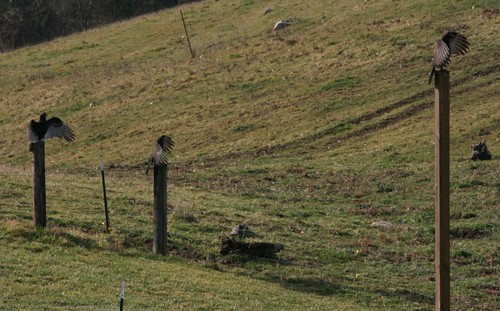
Normally we see fewer than 5 or 6 birds, but lately they've been more numerous. They often spread their wings to maximize the sun exposure on their backs.
Just down the road from us, the city of Radford has been home to a colony of vultures for several decades now and even hosts an annual Vulture Fest in early spring. But I'm beginning to think that some of those birds have decided to move into Plum Creek based on what we've seen out back over the past month.
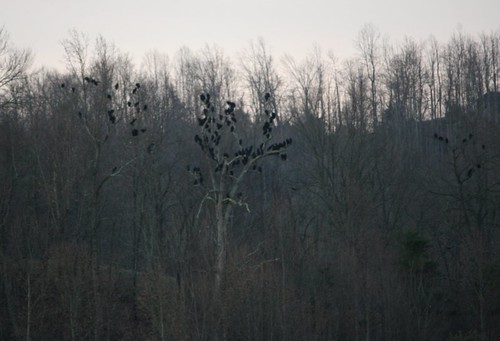
These trees full of buzzards are located on the ridge behind us. I'd estimate there were about 50-70 birds in this flock.
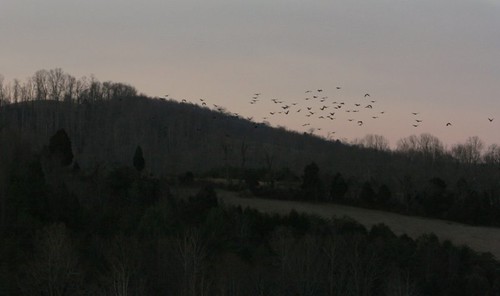
Turkey vultures have few natural predators and are protected under the Migratory Bird Treaty Act. According to the Wikipedia entry on the turkey vulture, "Its primary form of defense is regurgitating semi-digested meat, a foul-smelling substance which deters most creatures intent on raiding a vulture nest." And it that was attractive enough, "Like storks, the Turkey Vulture often defecates on its own legs, using the evaporation of the water in the feces and/or urine to cool itself, a process known as urohidrosis."
Boy howdy, I'd certainly leave them alone.
Turkey vultures are scavengers of dead animals. Black vultures are scavengers as well, but they will also kill an unprotected newborn calf given the opportunity. Normally the vultures around our house don't gang up and harass the neighbor's cattle, but lately they've been making a nuisance of themselves.
One morning a gang of vultures flew in and sidled up to the cows, who didn't appreciate the company one bit.
In response, the cows bunched up together and faced the birds. The vultures edged in closer with their wings outstretched, then ran or hopped as close as possible. Sometimes the birds rattle their wings as they move towards the cows. Vulture feathers must be awfully stiff to make as much noise as they do. It's a rustling, rattling noise and far more unnerving to hear than you might think.
After lots of distressed mooing, this one momma and her calf decided to take matters into their own hands (hooves?) and charge the vultures.
The vultures scattered and flew off. The cows went back to grazing.
One of the cows has a young calf but the others are much older animals, far too old to be ambushed by a flock of vultures, so I don't know why the vultures do this. Are the birds really trying to attack the calves or are they just bored? And we've observed this behavior on several occasions now, so it doesn't seem to be just a random event.
In closing, Wikipedia states that "The Black Vulture appears in a variety of Maya hieroglyphics in Mayan codices. It is normally connected with either death or as a bird of prey." I'll refrain from making any comments about that Mayan Doomsday Prophecy again.
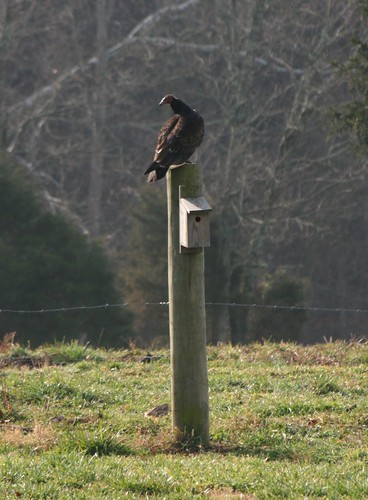
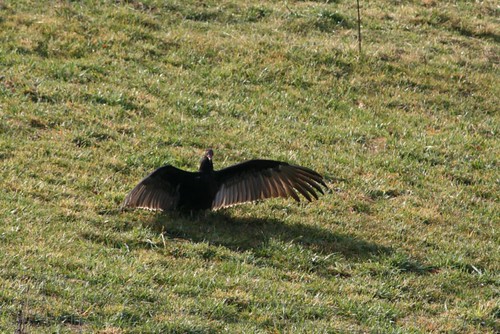

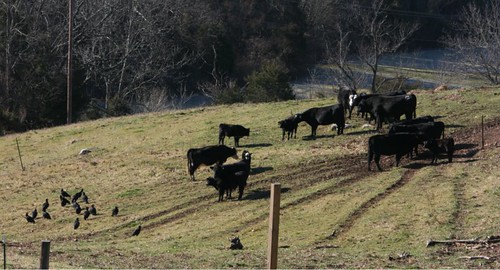
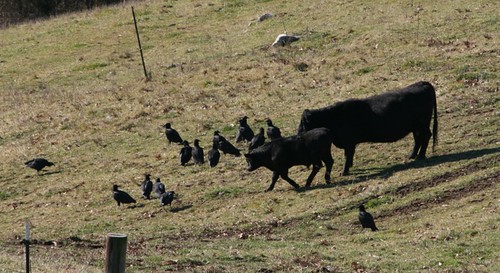
No comments:
Post a Comment